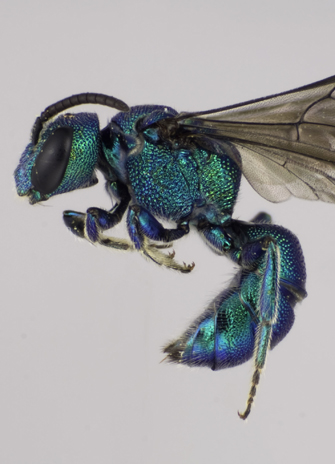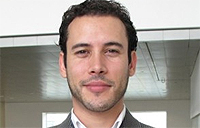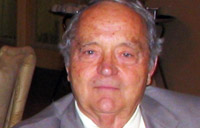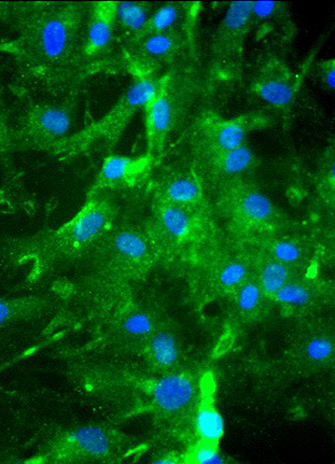Adnan Türegün has been appointed as the new director of CERIS – The Ontario Metropolis Centre, located at York University. His appointment is part of the transformation of CERIS, which will focus on multi-partner knowledge exchange.
Türegün is a sociologist with a BA from Hacettepe University in Ankara, Turkey; a master’s degree from Cumhuriyet University in Sivas, Turkey; and a doctorate from Carleton University in Ottawa. He is an adjunct  research professor in the Department of Sociology and Anthropology and the School of Social Work at Carleton University.
research professor in the Department of Sociology and Anthropology and the School of Social Work at Carleton University.
Adnan Türegün
Türegün has been working in the area of immigration and settlement in various capacities since 1999. His research focuses on: 1) immigrant economic integration, particularly, access to regulated professions and trades; 2) the historical development of the Canadian settlement service sector; and 3) professionalization of settlement work. He has taught and published widely, also taking on editorial and administrative responsibilities in this area.
Before joining CERIS, Türegün was the executive director of Carleton University’s Centre for International Migration and Settlement Studies and its predecessor, the Research Resource Division for Refugees, for eight years. He has served on numerous advisory bodies and consulted governments at different levels of jurisdiction.
CERIS is a partnership of Toronto-area universities (Ryerson, Toronto and York) and three major community organizations – Ontario Council of Agencies Serving Immigrants, Social Planning Toronto and United Way Toronto – with participation from all levels of government. The partnership serves both as a network of researchers, practitioners and policymakers, and as a dynamic knowledge exchange hub in the field of immigration and settlement.
Luin Goldring, the former director of CERIS at York, and Valerie Preston, the York University member of the CERIS board, are enthusiastic about this appointment. “Dr. Türegün brings a wealth of experience to this position,” says Goldring. “The CERIS board is confident that under his leadership, CERIS will flourish and innovate in the process of supporting knowledge exchange for academic and non-academic researchers, community workers and policy makers in the field of immigration and settlement.”
For more information, visit the CERIS website, which is in the process of being updated to reflect the changes.




 Mexalictus, which are mostly found in cloud forests and other damp habitats at high altitudes from southern Arizona to Panama.
Mexalictus, which are mostly found in cloud forests and other damp habitats at high altitudes from southern Arizona to Panama. new species described are likely solitary bees that nest in the ground, but they are so rare that their nests have never been discovered, even after several field trips to find them,” says Dumesh.
new species described are likely solitary bees that nest in the ground, but they are so rare that their nests have never been discovered, even after several field trips to find them,” says Dumesh. says Professor Laurence Packer, Dumesh’s supervisor and York bee lab leader. Without bees, our diets would be more restricted; nuts, berries and coffee would all be in shorter supply and thus more expensive.
says Professor Laurence Packer, Dumesh’s supervisor and York bee lab leader. Without bees, our diets would be more restricted; nuts, berries and coffee would all be in shorter supply and thus more expensive. overall ecology is all extremely important.”
overall ecology is all extremely important.”
 distributed to muscle in a more effective manner,” says Professor
distributed to muscle in a more effective manner,” says Professor 
 Evaluative Sciences and the University of Toronto. Weiss, the Chair in Autism Spectrum Disorders Treatment and Care Research in York’s Faculty of Health, is a member of the program’s core team, which includes scientists, clinicians and policymakers from across Ontario.
Evaluative Sciences and the University of Toronto. Weiss, the Chair in Autism Spectrum Disorders Treatment and Care Research in York’s Faculty of Health, is a member of the program’s core team, which includes scientists, clinicians and policymakers from across Ontario.
 The paper “Deformed Carbon Nanotube Junction and its Effect on Electrical Conductivity of Carbon Nanotube Nanocomposites” was presented by George Zhu (left), a professor in Lassonde’s Department of Earth and Space Science and Engineering.
The paper “Deformed Carbon Nanotube Junction and its Effect on Electrical Conductivity of Carbon Nanotube Nanocomposites” was presented by George Zhu (left), a professor in Lassonde’s Department of Earth and Space Science and Engineering.
 Jean-Gabriel Castel
Jean-Gabriel Castel
 Now, York University sociology Professor Deborah Davidson (right), along with a cross-disciplinary team of researchers, plans to capture these images – and the stories behind each act of remembrance – as part of a new project funded by the Social Sciences & Humanities Research Council of Canada (SSHRC) to build the framework for the world’s first comprehensive public archive of memorial tattoos.
Now, York University sociology Professor Deborah Davidson (right), along with a cross-disciplinary team of researchers, plans to capture these images – and the stories behind each act of remembrance – as part of a new project funded by the Social Sciences & Humanities Research Council of Canada (SSHRC) to build the framework for the world’s first comprehensive public archive of memorial tattoos.
 The lecture, “Understanding Diabetes and Treatments”, will take place Friday, Aug. 2, from 5:30 to 6:30pm, 105 Life Science Building, Keele campus. Everyone is welcome to attend this free public lecture. RSVP by July 30 to
The lecture, “Understanding Diabetes and Treatments”, will take place Friday, Aug. 2, from 5:30 to 6:30pm, 105 Life Science Building, Keele campus. Everyone is welcome to attend this free public lecture. RSVP by July 30 to  Association to go over the causes, symptoms and current available treatments for diabetes.
Association to go over the causes, symptoms and current available treatments for diabetes. of the afternoon, followed by York biology Professor Gary Sweeney of the Faculty of Science chairing the second session.
of the afternoon, followed by York biology Professor Gary Sweeney of the Faculty of Science chairing the second session.
 converted into neural commands for three-dimensional eye and head movements. This study will help provide insight into how the brain is affected by diseases and disorders of the nervous system.
converted into neural commands for three-dimensional eye and head movements. This study will help provide insight into how the brain is affected by diseases and disorders of the nervous system. investigations will provide knowledge of how a high fat diet leads to loss of blood vessels and new insight into ways in which these negative outcomes may be reversed. These findings may have potential clinical implications for treatment of obesity-associated complications that are linked to diabetes.
investigations will provide knowledge of how a high fat diet leads to loss of blood vessels and new insight into ways in which these negative outcomes may be reversed. These findings may have potential clinical implications for treatment of obesity-associated complications that are linked to diabetes. Such is the case in aging muscle. Hood’s research will also examine how exercise can attenuate this mitochondrial dysfunction and improve muscle health as people age.
Such is the case in aging muscle. Hood’s research will also examine how exercise can attenuate this mitochondrial dysfunction and improve muscle health as people age.
 The visit will take place July 10, from 10am to 1pm, at 519, Kaneff Tower, Keele campus.
The visit will take place July 10, from 10am to 1pm, at 519, Kaneff Tower, Keele campus.